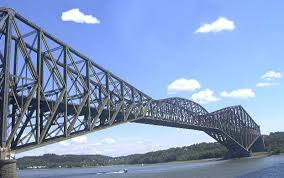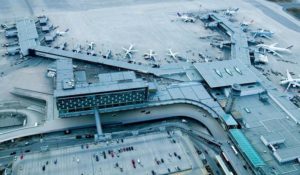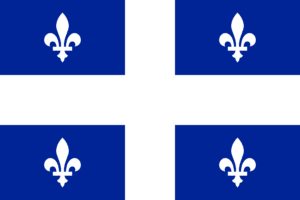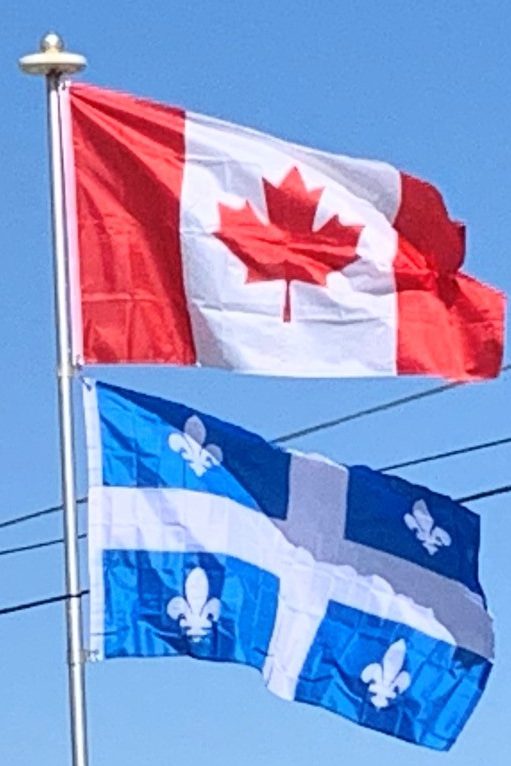The réseau routier québécois (Quebec road network) is managed by the Société de l’assurance automobile du Québec (SAAQ) (Quebec Automobile Insurance Corporation) and consists of about 185,000 kilometres of highways and national, regional, local, collector and forest roads. In addition, Quebec has almost 12,000 bridges, tunnels, retaining walls, culverts and other structures such as the Quebec Bridge, the Laviolette Bridge and the Louis-Hippolyte Lafontaine Bridge–Tunnel.

In the waters of the St. Lawrence there are eight deep-water ports for the transhipment of goods. In 2003, 3886 cargo and 9.7 million tonnes of goods transited the Quebec portion of the St. Lawrence Seaway.
Quebec has 6,678 kilometres of railways integrated in the large North American network. Although primarily intended for the transport of goods through companies such as the Canadian National (CN) and the Canadian Pacific (CP), the Quebec railway network is also used by inter-city passengers via Via Rail Canada and Amtrak. In April 2012, plans were unveiled for the construction of an 800 km railway running north from Sept-Îles, to support mining and other resource extraction in the Labrador Trough.

The upper air network includes 43 airports that offer scheduled services on a daily basis. The two most significant airports in the province can be found in Montreal and Quebec City. In addition, the Government of Quebec owns airports and heliports to increase the accessibility of local services to communities in the Basse-Côte-Nord and northern regions.
Flag of Quebec:
The flag of Quebec, called the Fleurdelisé (the Lily-flowered) represents the province of Quebec. It consists of a white cross on a blue background, with four white fleur-de-lis.
It was adopted by the government of Quebec during the administration of Maurice Duplessis (March 9, 1950). It was the first provincial flag officially adopted in Canada, first shown on January 21, 1948, at the Parliament Building of the National Assembly in Quebec City. Quebec’s Flag Day (January 21) commemorates its adoption each year, though for some time it was celebrated in May. At least one parade marked the flag’s 60th anniversary in January 2008.

The Fleurdelisé takes its white cross from the royal flags of the Kingdom of France, namely the French naval flag as well as the French merchant flag.
Its white fleurs-de-lis (symbols of purity) and blue field (symbolizing Heaven) come from a banner honoring the Virgin Mary. One such was reputedly carried by French Canadian militia at General Louis-Joseph de Montcalm’s victory at Carillon.
The flag is blazoned Azure, a cross between four fleurs-de-lis argent. Its horizontal symmetry allows both sides of the flag to show the same image.
The desire of French Canadians in Quebec for a distinctive flag was longstanding. Other flags that had been used included the Parti Patriote flag, a horizontal green, white, and red tricolour, which became the flag of the Saint-Jean-Baptiste Society; as well as the French tricolour.
The direct predecessor of the modern Fleurdelisé was created by Elphège Filiatrault, a parish priest in Saint-Jude, Quebec. Called the Carillon, it resembled the modern flag except that the fleurs-de-lis were at the corners pointing inward. It was based on an earlier flag with no cross and with the figure of the Virgin Mary in the center.
